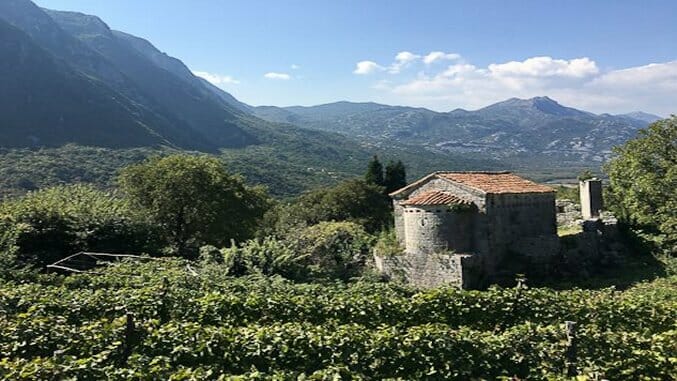Beautiful Balkans: Montenegro, Off the Beaten Path
Photos by Bridget Nurre Jennions
Okay, we admit it: we have a real thing for Montenegro. We’ve told you why you need to go there now and we’ve written at length about it’s coastal gems: Budva and the Bay of Kotor. But with the number of visitors to this small Adriatic country steadily increasing and daily low-cost flights connecting its capital Podgorica to many of Western Europe’s major cities, we figured it was time to let you in on a few secret spots still known mostly to locals: Lake Skadar, the Eastern Highlands, and Bojana Island.
Cap off a day of trekking with a night in a traditional mountain hut, practice yoga from the corn-grinding circle of a ruined 14th century village overlooking the Balkans’ largest lake, or chat with local fishermen as you dine on some rare Adriatic delights. With all three destinations within two and half hours of Podgorica, you don’t even have to choose: any of these would make for an unforgettable weekend or you could combine them for a diverse weeklong Montenegrin adventure.
![]()
Lake Skadar

An emerald oasis nestled between Montenegro’s coastal peaks and its capital city, Lake Skadar will immediately take your breath away—if not for its tranquil lily pad-covered lagoons, then definitely for the medieval monasteries that can be found perched on tiny islands in the center. So strong was the pull of this ancient lake that former British publishing and public relations executives Ben and Emma Heywood left their lives in London to establish their tour company, Undiscovered Montenegro, on its banks.
From their beautifully refurbished inn near Virpazar, Villa Miela, you can experience the bounty of the lake in a variety of ways: hiking the saw-toothed peaks, biking through the nearby villages, or kayaking across its serene waters to catch a glimpse of the giant Dalmatian pelican or Grmozur, the 19th century Montenegrin Alcatraz. The company also offers weeklong yoga holidays that include a morning of hiking to the 14th century village of Godinje and its crop-grinding-circle-turned-yoga platform that offers some spectacular lake views. Though the village still largely sits in ruins following a devastating 1979 earthquake, it is home to Konoba Godinje and Winery, where owner Miodrag Lekovic offers up fresh local cheese and pours some of the best of Montenegro’s full-bodied Vranac red wine varietal.
In fact, in addition to being one of Montenegro’s most important ecosystems, Lake Skadar is also the site of its biggest wine region. Just seven kilometers from Virpazar, the wine village of Limljani bears a striking resemblance to the mountain-backed vineyards of South Africa. Be sure to taste the Sveti Toma wine at Klicic Winery, a barrique-aged Vranac named for the 7th century chapel that survived a tumble down the hill into the valley nearby.
Eastern Highlands: Bjelasica, Komovi, and Prokletije
-

-

-

-

-

-

-

-

-

-

-

-

-

-

-

-

-

-

-

-

-

-

-

-

-

-

-

-

-

-

-

-

-

-

-

-

-

-

-

-










































